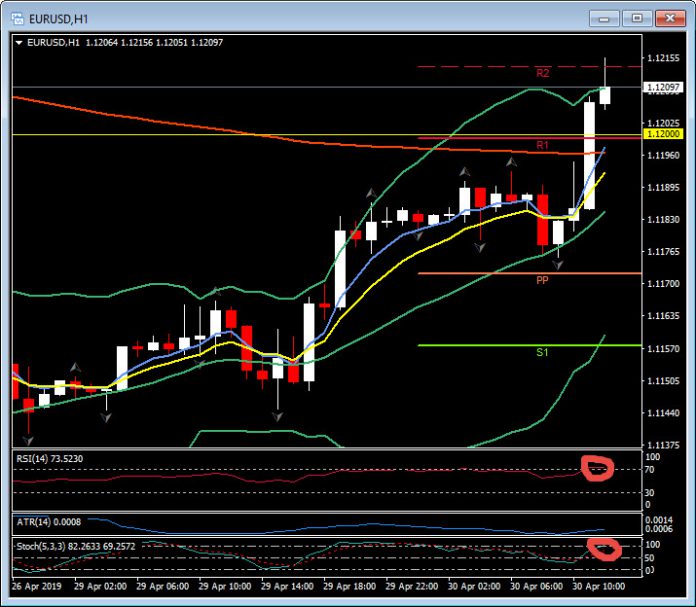EURUSD, H1
Eurozone Q1 GDP growth stronger than expected at 0.4% q/q, up from 0.3% q/q in the previous month. This ties in with the unexpected acceleration in Spanish GDP growth to 0.7% q/q and the steady 0.3% q/q in France, with the latter showing that private consumption helped to compensate for the sharp deceleration in export growth.
In Germany the inflation and jobless numbers also helped the Eur today. German state inflation numbers jumped higher in April, with annual rates across the five states that release data ahead of the preliminary pan German number rising between 0.4-0.6 percentage points. This leaves a clear upside risk for the German HICP rate at around 1.8%. The jobless numbers fell back more than anticipated too in April, with the overall reading down -12K over the month, versus Bloomberg consensus of -7K.
The overall Eurozone jobless rate also unexpectedly fell back to 7.7% in the March reading, from 7.8% in February. The data confirms that despite the weakness in the manufacturing sector the improvement on the Eurozone labour market continued in March and German April readings also showed an unexpectedly strong decline in jobless numbers that signal another good Eurozone number for this month. Still, PMI readings indicate that companies are turning cautious about taking on more staff and today’s breakdown for the March number still shows unexpectedly high youth unemployment rates, which stood at 16.0% for the Eurozone as a whole. The 5.6% rate in Germany contrasts sharply with the 20.2% in France and rates of 33.7% and 30.2% in Spain and Italy respectively. This highlights the ongoing need for structural reforms in major Eurozone countries and leaves the potential for further political instability down the line, while also keeping a lid on wage growth and overall inflation, but also consumption. Like the GDP numbers then, the data confirms that there is no need for additional stimulus measures at the current juncture, but also that the ECB can afford to maintain the accommodative policy stance into 2020.
EURUSD breached 1.1200 earlier and ran into R2 at 1.1215 following the jobless numbers. There is strong resistance at 1.1230 and 1.1250 with support at 1.1200, 1.1170 and 1.1125.
Stuart Cowell
Head Market Analyst
Disclaimer: This material is provided as a general marketing communication for information purposes only and does not constitute an independent investment research. Nothing in this communication contains, or should be considered as containing, an investment advice or an investment recommendation or a solicitation for the purpose of buying or selling of any financial instrument. All information provided is gathered from reputable sources and any information containing an indication of past performance is not a guarantee or reliable indicator of future performance. Users acknowledge that any investment in FX and CFDs products is characterized by a certain degree of uncertainty and that any investment of this nature involves a high level of risk for which the users are solely responsible and liable. We assume no liability for any loss arising from any investment made based on the information provided in this communication. This communication must not be reproduced or further distributed without our prior written permission.



















